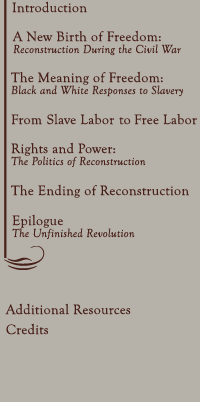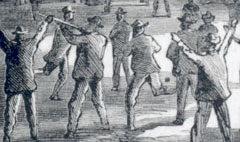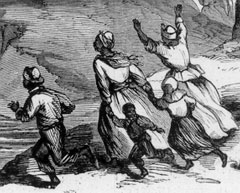




Violence
Violence swept across parts of the South in the aftermath of the Civil War, reflecting the immense tensions created by the end of slavery and Confederate defeat, and white Southerners' determined resistance to blacks' quest for autonomy.

Freedpeople were assaulted and murdered for attempting to leave plantations,
disputing contract settlements, seeking to enter white-controlled churches,
and refusing to step off sidewalks to allow white pedestrians to pass.
Occasionally, as in the Memphis and New Orleans riots of 1866, black communities became the victims of wholesale assault by white mobs, aided by the local police.

In these outbreaks, schools, churches, and other community institutions, symbols of black freedom, became the targets of violence, as well as private homes and individual African-Americans.
Copyright
2003